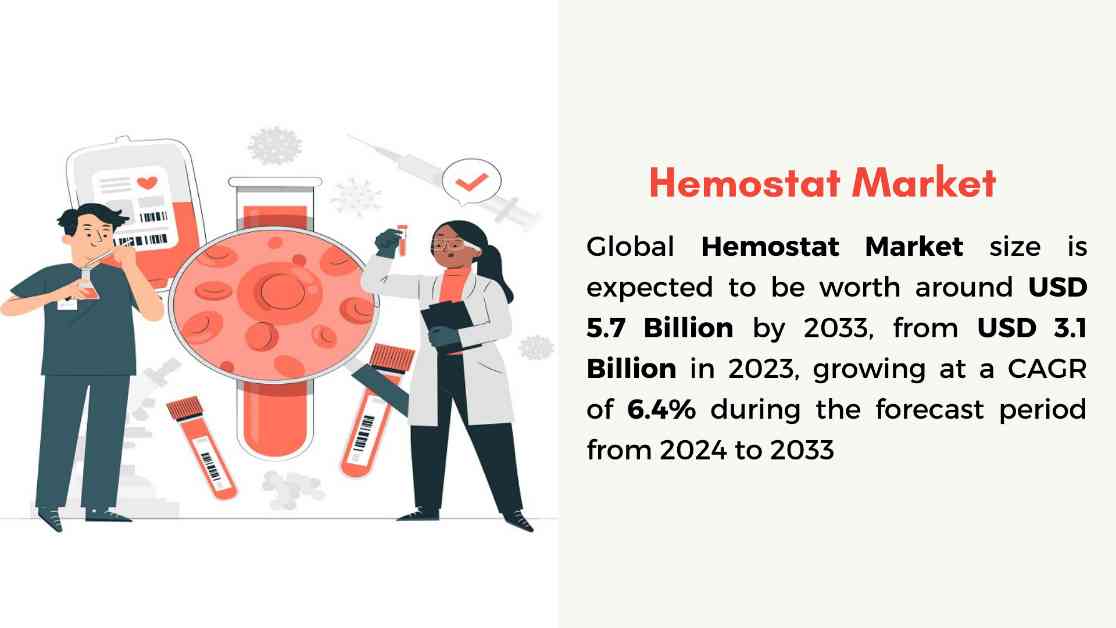The global hemostat market is projected to experience significant growth, with a forecasted increase in value from USD 3.1 billion in 2023 to around USD 5.7 billion by 2033. This growth is attributed to the rising number of surgical procedures across various medical specialties, where hemostats play a crucial role in controlling bleeding and ensuring patient safety.
Advancements in surgical techniques and a growing focus on minimally invasive procedures are driving the expansion of the hemostat market. Additionally, the increasing prevalence of cardiovascular diseases and orthopedic conditions that require surgical interventions contribute to the market’s growth. Technological advancements in hemostatic products, such as more effective and user-friendly agents, are also boosting market growth.
Despite the positive outlook, challenges like stringent regulatory requirements and the high cost of advanced hemostats may hinder adoption, especially in developing regions. However, recent developments in the market, including the introduction of innovative products and strategic collaborations among industry players, are expected to drive growth. Companies are focusing on developing advanced hemostatic powders and sealants to provide more effective bleeding control during surgeries.
The key takeaways from the article highlight the dominance of thrombin-based hemostats in the market, with matrix and gel hemostats leading the formulation segment. The surgery segment holds a dominant market position, with orthopedic surgery emerging as the dominant application segment. Hospitals are the leading end-users of hemostats, emphasizing their pivotal role in utilizing these products for patient care.
The article also provides insights into hemostat statistics, such as trauma-related bleeding accounting for a significant percentage of deaths in different settings, and the FDA’s approval of numerous hemostatic agents over the years. It discusses the importance of primary and secondary hemostasis processes, market trends, and emerging technologies in the hemostat market.
Overall, the hemostat market is poised for continued growth, driven by technological advancements, an increasing number of surgical procedures, and regulatory approvals of new hemostatic products. The emphasis on innovation, biocompatibility, and cost-effective solutions is expected to meet the growing demand for advanced surgical solutions in the market.




